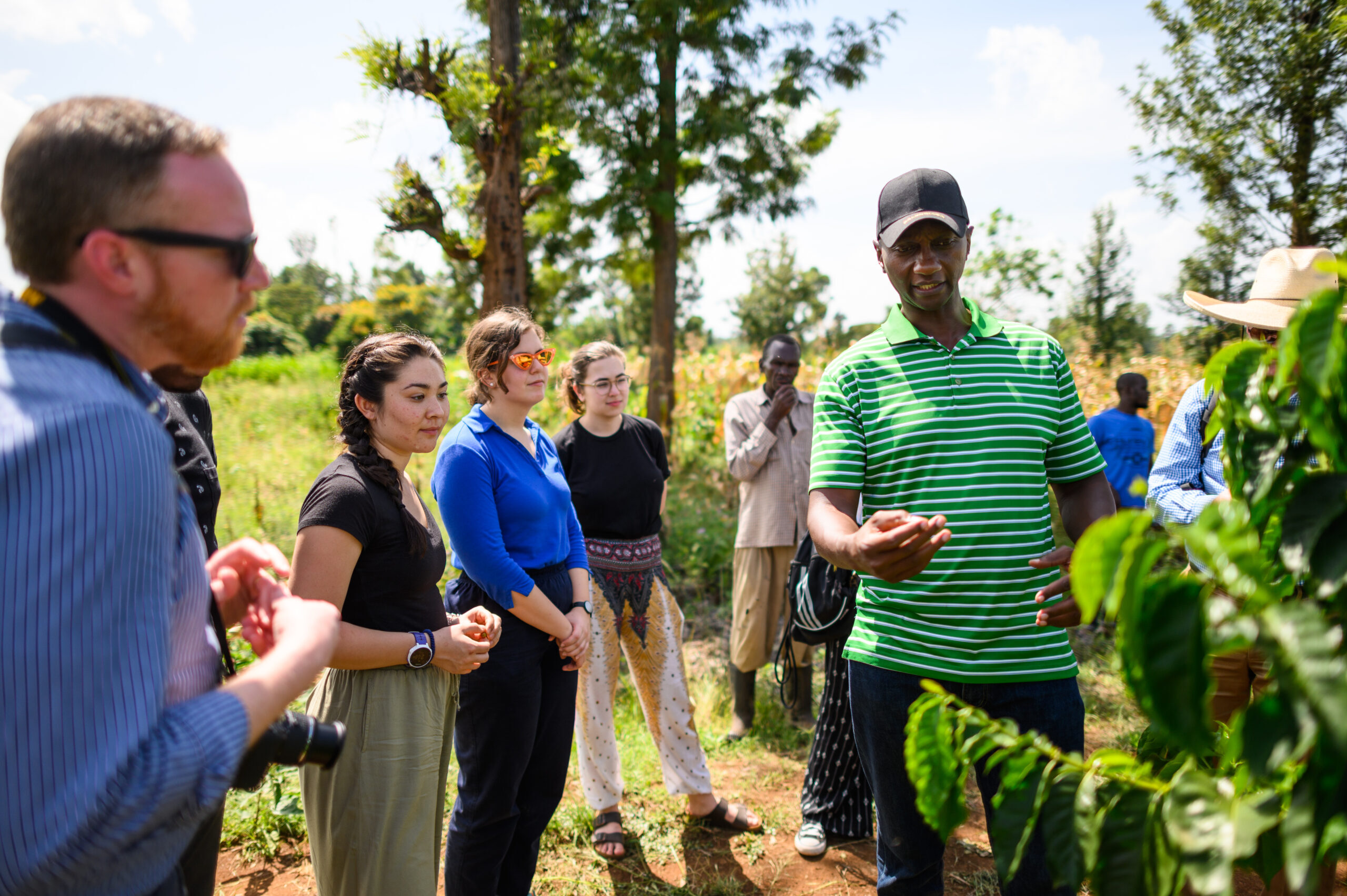
UM Engineering students visit a coffee plantation in Knubu, Kenya on March 4, 2020. Photo: Austin Thomason
About 1,500 University of Michigan students, so far, have applied to travel to 33 countries during winter 2022, a number that is fast approaching pre-pandemic levels.
During winter semester 2020, before the spread of COVID-19 significantly disrupted education abroad, 2,294 U-M students applied to travel to 50 countries.
Patrick Morgan, U-M chief international safety officer, says vaccines have been a game-changer as students’ interest in trips has increased.

“The ability to travel has been expanded in recent months and the safety of going on a trip for vaccinated travelers has greatly improved,” Morgan said. “Many U-M winter term programs have been approved to accept students; students just have to prepare better. In collaboration with our international education partners at U-M, we created a unique process to guide them and make their experience abroad safer and more successful.”
Study abroad programs are opening up again. What has changed for undergraduate students who want to travel?
There are more considerations for international travel that simply did not exist before. Every student on University of Michigan Related Travel now must complete either a COVID-19 Travel Plan or a Safety Plan to be reviewed by our International Travel Oversight Committee (ITOC), as there are many more factors to consider for health, safety and well-being.
This process guides students through pre-departure preparations and ensures they meet U-M and host country requirements (see country-specific U-M requirements).
How does this new process work?
We created unique travel plans that prepare students interested in going abroad. This review process for COVID-19 Travel Plans and Safety Plans involves the traveler, it guides and informs them on what they need to have a successful journey.
Members of the Global Engagement Team will work with students to bring the plan to a sufficient level if needed. In particular, we want to make sure students understand entry requirements and they have plans for the possibility of testing positive for COVID-19 before boarding their return flight and may have to stay abroad longer than expected.
Over 500 students have completed a Safety Plan or COVID-19 Travel Plan this term, showing that students are indeed willing to go through the process to travel abroad.
What is U-M doing to get students safely back on planes and overseas?
We have carefully considered how to prepare students and manage expectations. We have 30 plus international education units at U-M, so we brought everyone together to generate ideas, hear different viewpoints and create an effective process. It is a team effort with internal and external voices. As an example, colleagues from the Center for Global and Intercultural Study provided suggestions to make our processes more efficient and student-friendly, and we incorporated that feedback.
The Global Engagement Team in the Office of the Provost, in collaboration with our international education colleagues and ITOC, have all been—and still are—instrumental in reviving education abroad in an intentional way. Together, we set the parameters of what we wanted to achieve, our end goals, and how we could get there. Out of that continued effort, we developed a structure to evaluate locations that are eligible for student travel in a way that is tailored to the university’s needs and mission.
Are there still many restrictions on where students are allowed to travel?
There are positive trends to point to increasing vaccine rates around the world and fewer entry restrictions—especially for vaccinated travelers. As conditions in countries improve, more opportunities open up for U-M travelers. For example, in April 2021 there were only 29 country options for undergraduate U-M Related Travel. Now there are 120 countries that are options. Though the restrictions have decreased, travel during a global pandemic still requires careful preparation and flexibility to adjust plans as conditions change.
U-M travel designations include COVID-19 Medium Risk and High Risk, and Travel Warning and Travel Restriction. We are looking closely at countries and updating their status on an iterative basis using various external and internal travel sources.
COVID19 Medium Risk and Travel Warning locations are open to all students who meet travel requirements. There are 120 locations that are in this bucket. Though undergraduate students may not travel to COVID-19 High Risk or Travel Restriction places, these locations are open to graduate students who meet U-M travel requirements.
Once the travel plan is submitted, members of the ITOC will review and provide a decision.
Do graduate students have to follow the same protocols?
The process is the same for graduate and undergraduate students; however, graduate students have access to more destinations and we take into consideration that they may have deep knowledge of the international destination.
Can we say that the pent-up demand for study abroad is over and programs might return to full-steam operations for spring and summer 2022?
The high level of pent-up demand is undeniable. Countries are reopening, study abroad programs have been green-lighted, and travel is picking back up. Travel limitations and uncertainty still remain, so I think the desire to travel is still much larger than the actual travel we observe taking place. We are cautiously optimistic and I expect to see an increase in demand in future terms.


